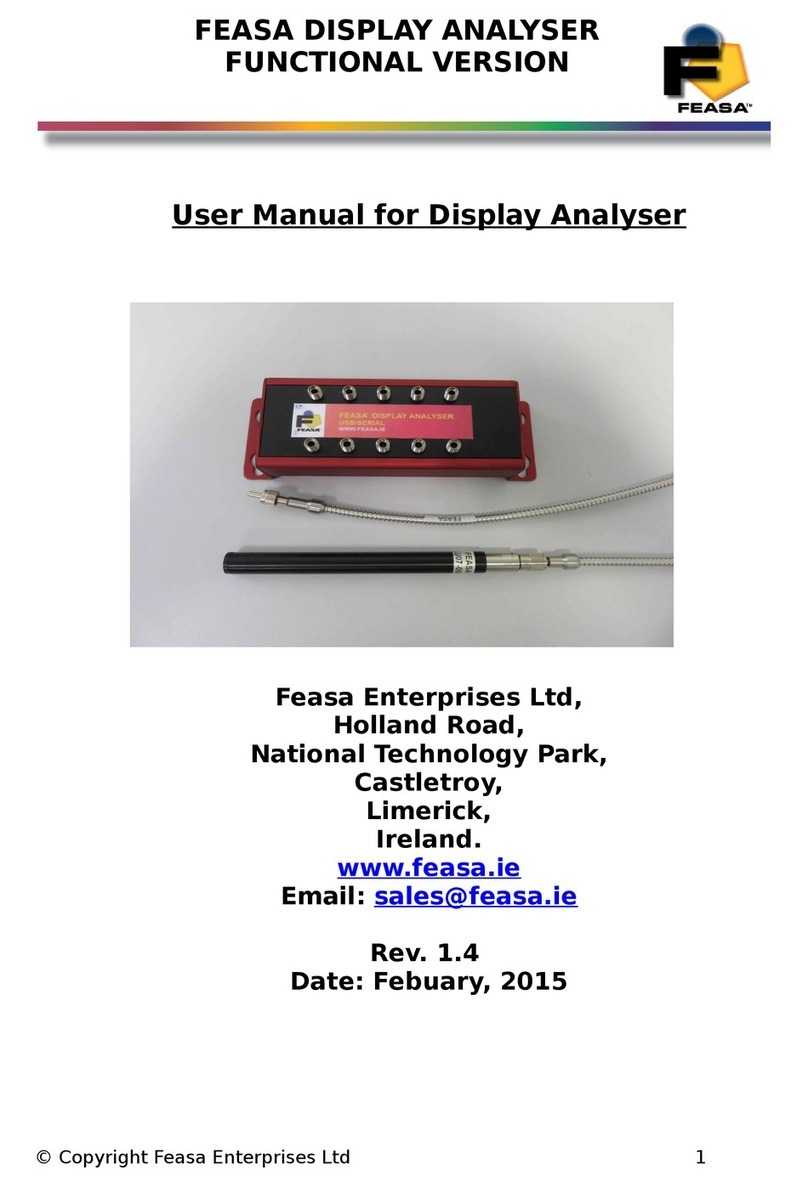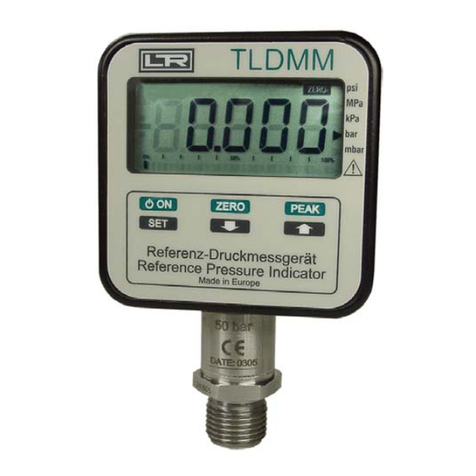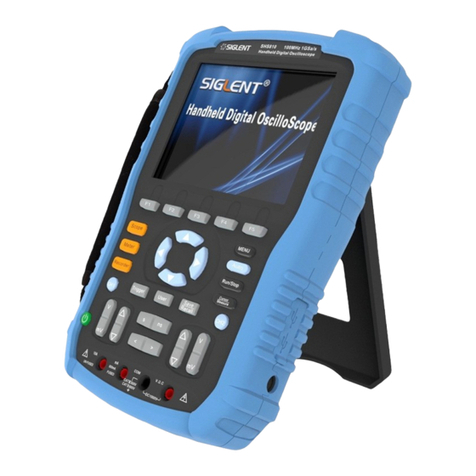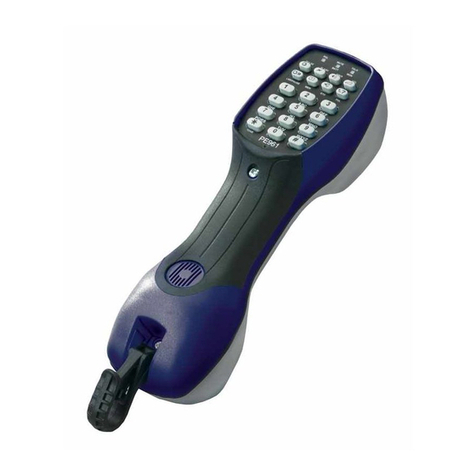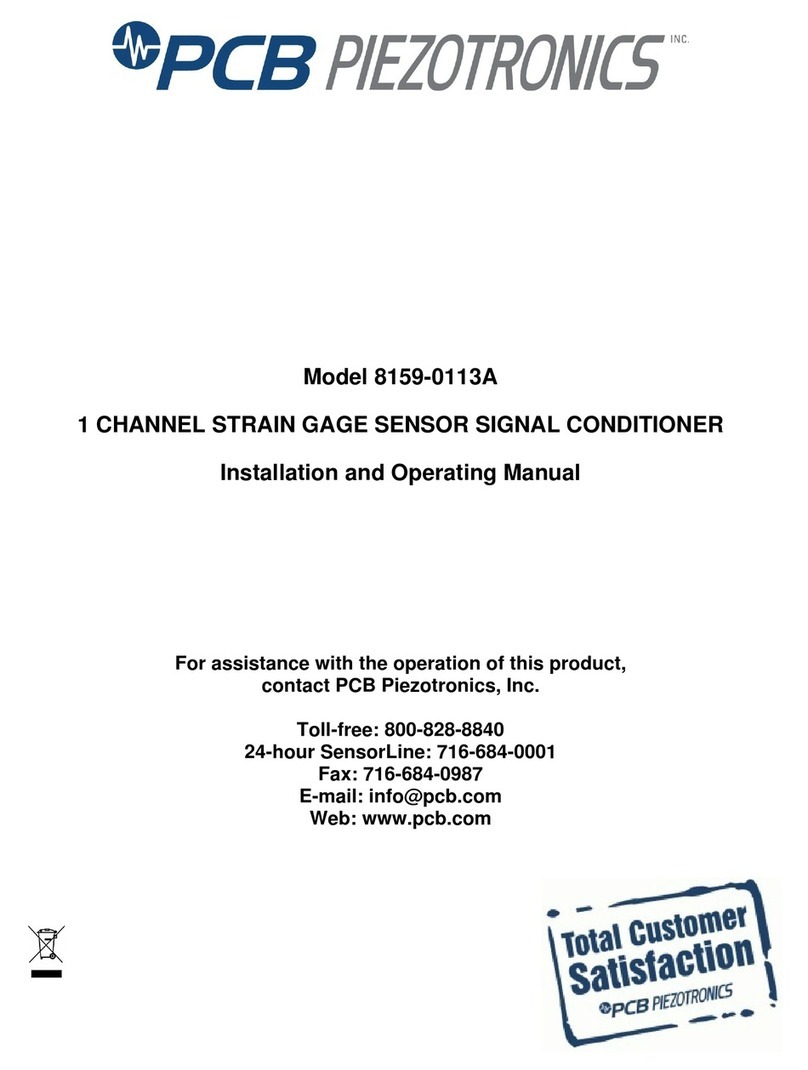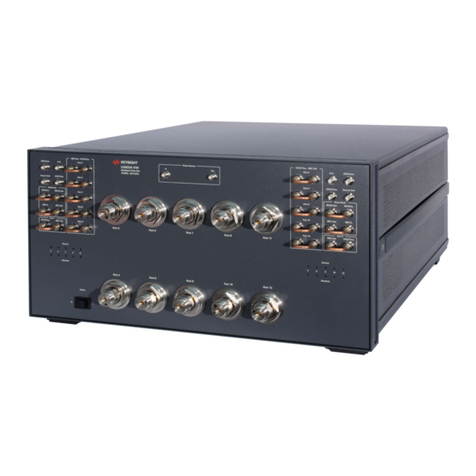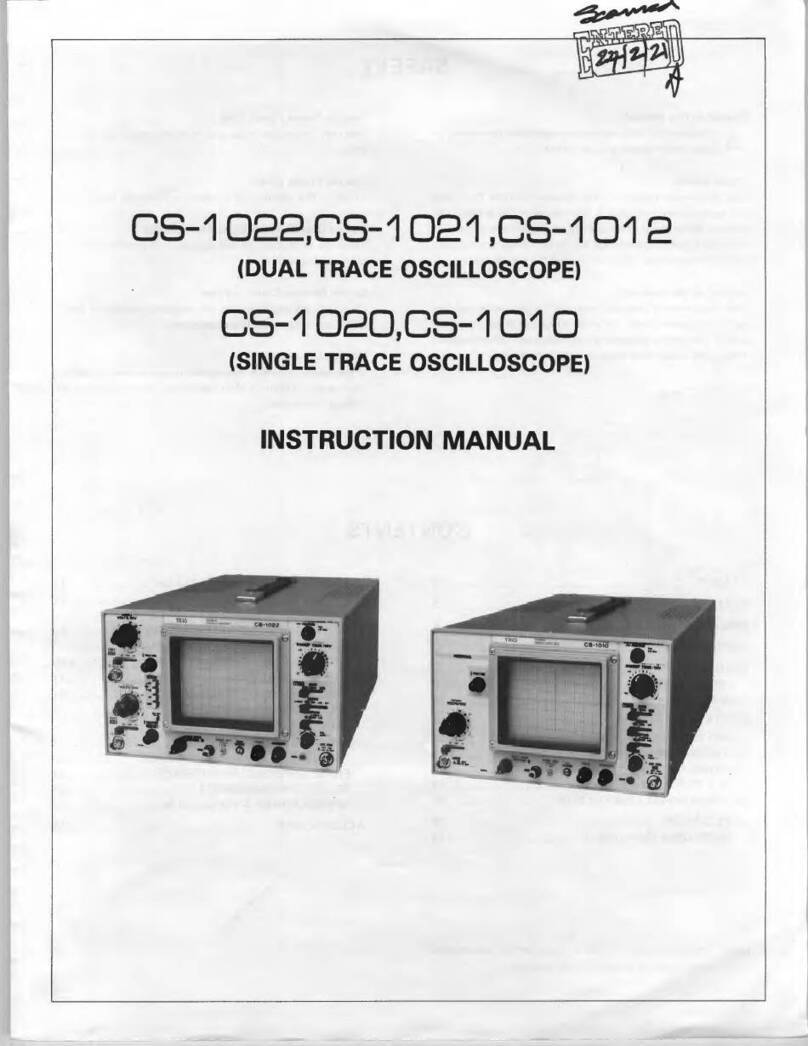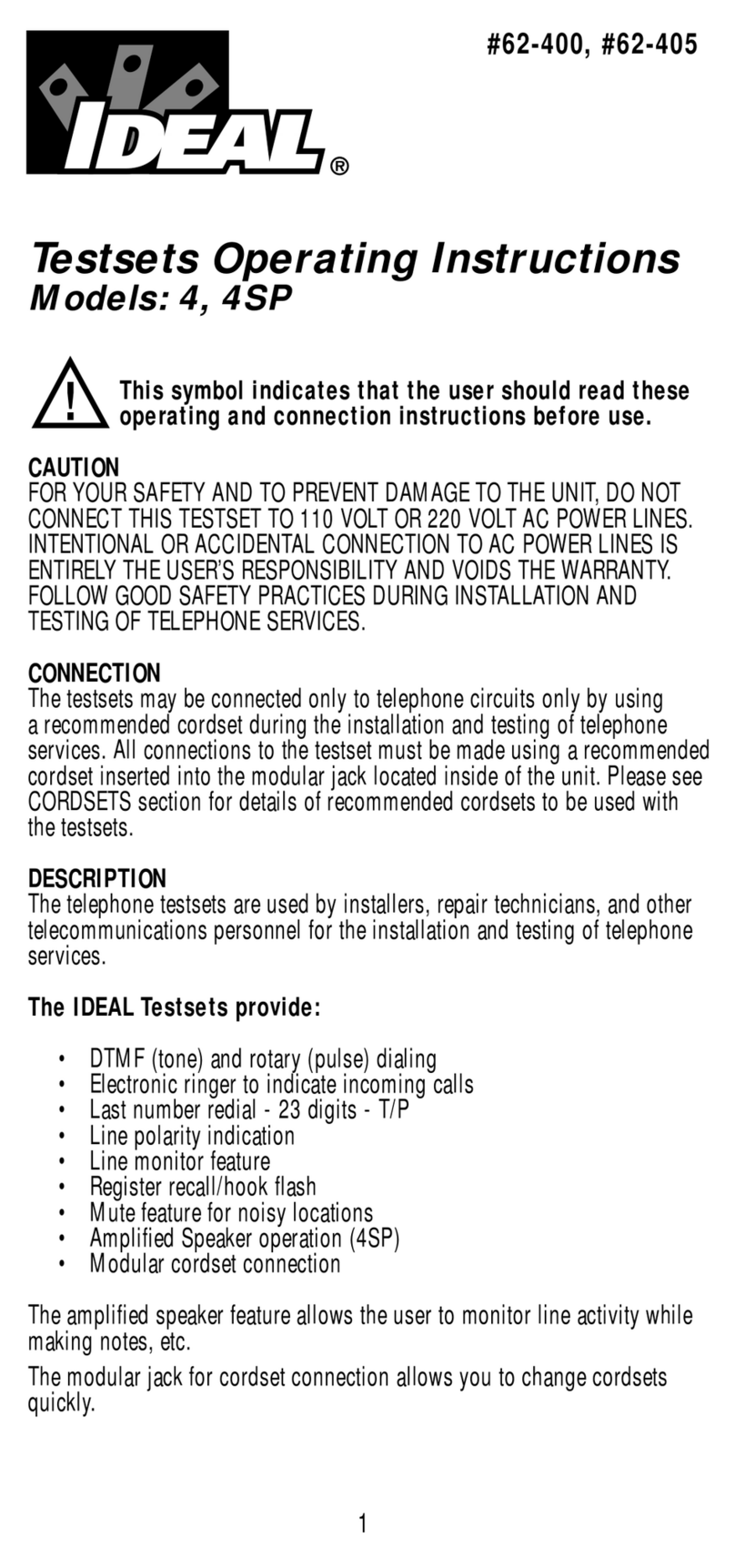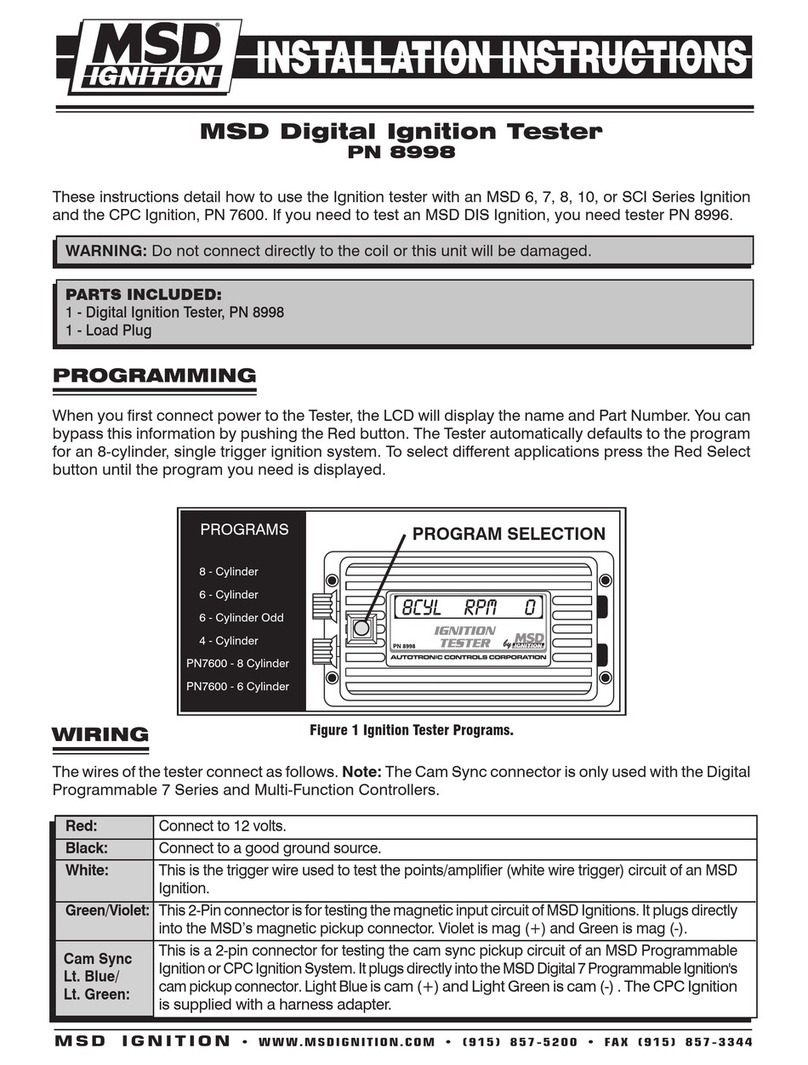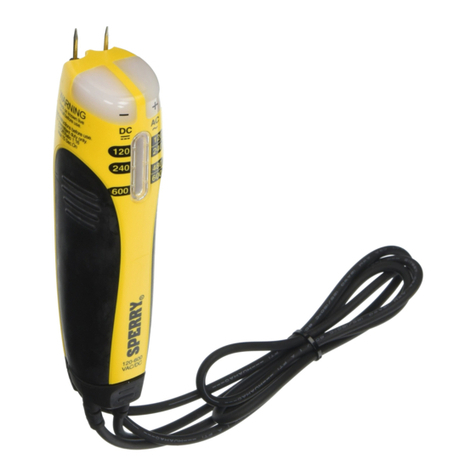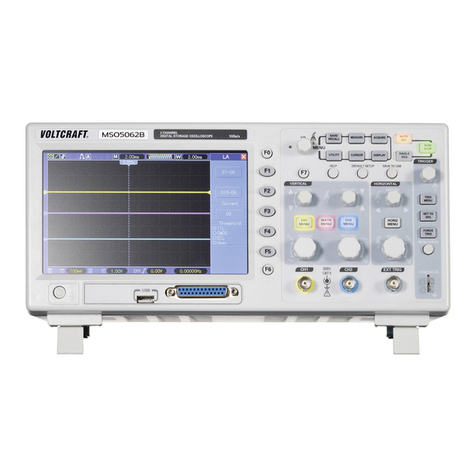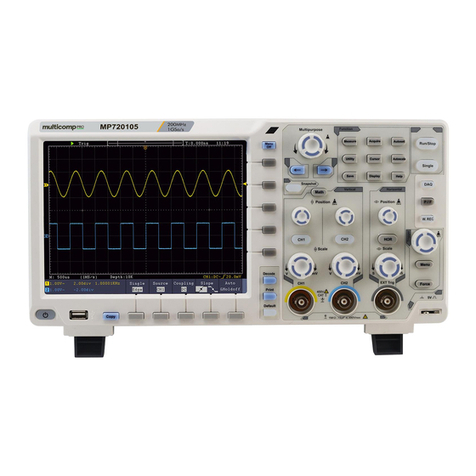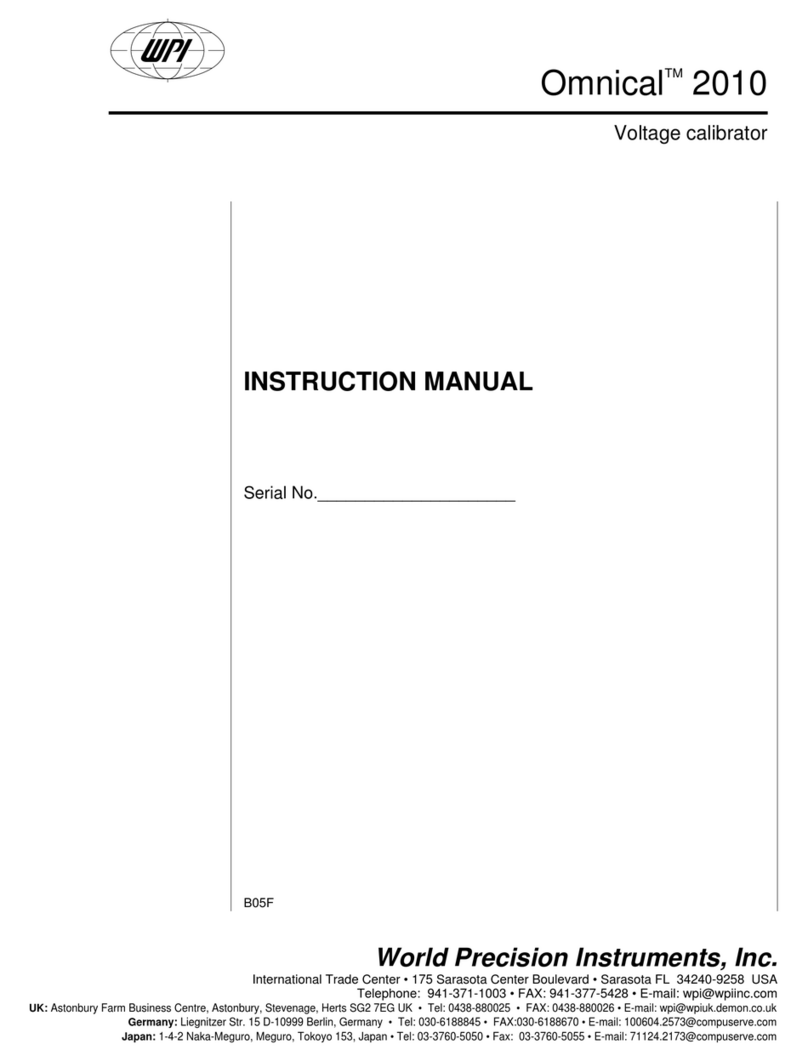TENTECH EM4058 User manual

Formato: 137mm x 190mm
P. 03
P. 31
Manual de uso
Telurómetro digital
Digital earth tester User guide
EM4058
TENTECH CORPORATION
7330 NW 66th ST
Miami, FL 33166

EM-4058
Digital earth tester
User guide
GF-2028
© 2016 TENTECH. All rights reserved.
3

The rubbish bin with a line through it means that in the European Union, the
product must undergo selective disposal for the recycling of electric and
electronic material, in compliance with Directive WEEE 2002/96/EC.
4

Index
1. Description........................................................................................................6
2. Control panel.....................................................................................................8
2.1. Connections and items...............................................................................8
2.2. Keyboard....................................................................................................9
3. Measurement ranges.......................................................................................10
4. Battery / battery charger..................................................................................11
4.1. Checking battery status............................................................................11
4.2. Recharge procedure.................................................................................11
5. Equipment calibration checking........................................................................12
6. Grounding resistance measurement................................................................13
6.1. Resistance measurement – one frequency...............................................13
6.2. Resistance measurement – frequency SCAN...........................................14
6.3. Observations about grounding diffusion systems (GDS)...........................16
7. Spurious voltages measurement......................................................................17
8. Soil resistivity measurement............................................................................18
9. Abnormalities indications on the display...........................................................21
9.1. Excessively high spurious voltages...........................................................21
9.2. Excessively high earth resistance.............................................................21
9.3. Excessively high resistance in the auxiliary rods.......................................22
9.4. Excessively high soil resistivity.................................................................22
10. Software........................................................................................................23
10.1. USB Drivers...........................................................................................23
10.2. T-Logger software..................................................................................23
11. Remote control..............................................................................................24
12. Printer............................................................................................................25
13. Cleaning........................................................................................................25
14. Technical Specifications................................................................................26
15. Warranty........................................................................................................29
5

1. Description
The EM-4058
earth tester is a digital instrument that allows to measure
the Earth resistance and Ground resistivity (using Wenner’s method), as
well as to detect parasitic voltages present in the ground. This instrument
is suitable to measure earth systems in power substations, industries,
distribution networks, etc., according to IEC 61557-5. It is also suitable for
soil resistivity measurements, in order to optimize the earth systems
project. It is fully automatic and easy-to-operate equipment. Before
starting each measurement, the equipment will check that conditions are
within appropriate limits and will notify the operator in case any
abnormality turns up (too high interference voltage, too much resistance
in test spikes, very low test current, etc). Then, it will look for the most
suitable range and show measurement results in an alphanumeric
display.
In order to conveniently test the earth system, EM-4058
allows to perform
measurements using the test current which frequency may be operator
selected (270 Hz, 570 Hz, 870 Hz, 1170 Hz or 1470 Hz). On one hand,
the lowest frequency will allow to analyze the earth system behavior
related to fault currents of industrial frequency, while on the other hand,
the measurement performed with the highest frequency will best show the
behavior in connection with electrical currents caused by lightning and will
offer a very high immunity related to interference voltages that are usually
present in soils, specially near substations.
The instrument has four ranges that are automatically selected, covering
measurements from 0.01 Ω up to 20 kΩ, which allows to obtain very
accurate measurements for any kind of soils. During ground resistivity
measurement, the operator may indicate the distance between spikes in
order for the equipment to apply Wenner’s formula and to show the
resistivity value directly. The EM-4058
has a Frequency Scan feature that
performs an earth resistance measure with all available frequencies
automatically and calculates, display and print the average result besides
the individual result of each frequency. Those results are saved on the
internal memory.
The equipment has a Bluetooth communication interface that allows
remote operation through a Tablet running the Android application. With it
you can save photos of the measurements and the GPS coordinates of
each. Also allows you to record voice annotations to each measurement.
6

The EM-4058 has an USB interface that allows to communicate
measured values to a computer or data logger for their later analysis. It is
portable, strong and lightweight equipment, suitable to be used out in the
field and under severe weather conditions. It is powered by a
rechargeable battery with an external 12VDC / 2A power source charger
and it is supplied with all the necessary accessories for measurements
(test spikes, leads, power, supply.) within an auxiliary bag that makes it
simple to carry.
7

2. Control panel
All of the EM-4058 buttons, keys, outputs and connections are located on
the panel, and are easily accessible by the operator. The following
graphics show the function of each one of the equipment’s items.
2.1. Connections and items
Output terminal E
Output terminal ES
Output terminal H
Output terminal S
Alphanumeric display
Keyboard
USB communication port
Power supply input
Printer
On / Off key
8

2.2. Keyboard
Key Function
ON/OFF switch
Selects the resistance measurement
function
Increase / Decrease. Switch between the frequencies of 270 Hz, 570 Hz,
870 Hz, 1170 Hz or 1470 Hz
Frequency Scan: feature that performs an earth resistance
measure with all available frequencies automatically and
calculates and display the average result besides the individual
result of each frequency
Selects the resistivity measurement
function
Increase or decrease the specified distance between rods in a
progression of 1, 2, 4, 8, 16 or 32 meters. It also allows the
operator to select the Rx function, used to check the equipment
calibration by using a standard resistance (ignoring the “distance”
parameter, not needed in this function)
Increase or decrease the specified distance between rods in one
meter steps.
9

Shows the battery charge status on the display
Prints the measurement
Activates the voltmeter
START key; starts the test.
3. Measurement ranges
The EM-4058 automatically selects an adequate range when operating,
allowing measurements between 0.01 Ω and 20 kΩ (resistance), 0.01 Ωm
and 50 kΩm (resistivity), or voltages between 0 and 60 V~ (when in the
voltmeter function).
10

4. Battery / battery charger
The EM-4058 uses a 12 V – 3 Ah rechargeable battery. At the end of its
useful life, the battery must be recycled or disposed of properly, in order
to protect the environment.
4.1. Checking battery status
Before starting each test, it is recommended to check if the battery has
enough charge. This can be done by pressing the battery status ( )
key. If the battery charge is low, the following message will appear on the
display:
4.2. Recharge procedure
This equipment has an internal battery charger with a smart circuit which
adjusts the battery charge to the optimized parameters to ensure the
maximum service life. To recharge the battery:
• Check if the equipment is off, and then connect it to the AC Adapter.
• The charging indicator ( ) will turn on red and will
remain that way until the battery is totally charged. Then the light will
remain green and keep in that way until the equipment is disconnected
of the AC Adapter.
Note: If the equipment is turned on, the charging procedure will be momentarily
interrupted till it is again turned off.
Note: battery slowly loses part of its charge while stored, even without use.
Therefore, before using the equipment for the first time, or after a long period out of
use, it may be necessary to recharge the battery.
11

5. Equipment calibration checking
By using a standard resistance (Rx), it is possible to test the equipment
calibration. The resistance must be connected to the EM-4058 as shown
below:
After connecting the resistance, follow these procedures:
·
Turn the EM-4058 on ( ).
·
Select the resistivity function ( ).
·
In the distance / standard resistance selection function, choose Rx
(nominal standard resistance).
·
Press the key.
·
After 5 seconds, a stable value close to the standard resistance’s
nominal value should appear on the display.
·
If this is not the case, the equipment accuracy is out of its
specification and must be adjusted by a qualified laboratory.
12

6. Grounding resistance measurement
Insert the auxiliary rods (current rod E3 and voltage rod E2) in the ground.
Using the cables supplied with the equipment, connect the rods to the H
and S output terminals, respectively. The grounding system under test
must be connected to E with the 5 meters cable.
6.1. Resistance measurement – one frequency
Select the Resistance mode by pressing the button, choose one
frequency using the buttons (yellow arrows).
The display will show the selected test mode and frequency. Press the
button to start the test. The test number will be shown on the display,
followed by the message “WAIT...”, and after a few moments the
resistance value will appear, as in the following example:
The result will then be stored on the memory.
13

6.2. Resistance measurement – frequency SCAN
Select the Resistance mode by pressing the button, and select the
SCAN mode by pressing the button. The LED above the button will
be litght and the display will show the message SCAN.
Press the button to start the test and wait the end of all five
consecutive measurements. The display will show the average value of
all.
The average value between the resistances obtained for each frequency
is displayed as the final result of the SCAN.
The result will then be stored on the memory.
14

At the end of a SCAN measurement, use the buttons (arrows in
yellow) to view the individual result of the test at each frequency.
15

6.3. Observations about grounding diffusion
systems (GDS)
In order to obtain a valid result when measuring a grounding diffusion
system (GDS), some additional prerequisites must be observed: the
current electrode must be away enough from the GDS to prevent their
influence areas from overlapping, while the voltage rod (probe) must be
set up in the potential plateau area. Usually, the radius of each influence
area is about three to five times bigger than the electrode’s dimensions.
The appropriate compliance of this condition must be checked by carrying
out three successive measurements of the GDS resistance, keeping the
current rod in position, but moving the voltage rod about 2 meters
between measurements (L, M, and N points in the image below). If all
three measurements show the same result (within the earth meter
specified error margins) the measurement should be considered correct.
Otherwise, the distance from the current rod to the GDS should be
significantly increased and the process, repeated.
16

Generally, GDS dimensions are greater than those of the auxiliary current
rod, thus its area of influence diameter is also greater. So, in order to
comply with the required condition, the probe must be set up closer to the
current rod than to the GDS. A distance of 62% is usually adopted as a
first try. It should be noted that when measuring GDS resistance in large
systems (such as a large grid that underlies a substation) distances of
hundreds of meters are required to fulfil the condition. Technical literature
describes alternative methods that make it possible to reduce those
distances with valid results.
Note: all these observations refer to physical aspects essential to the
measurement process, being applied to all earth meters, regardless of
manufacturer or technology.
7. Spurious voltages measurement
In order to check the existence and measure eventual parasitic currents in
the soil, the rods must be set up in the same position used to perform
grounding diffusion measurements.
After placing the rods, press the key. The display will show the
voltage between the system and the voltage rod, up to a maximum of
60 V.
17

8. Soil resistivity measurement
NOTE: in this function, the equipment operates only with the 270 Hz
frequency.
To select the resistivity measurement function press the key. Insert
four rods in the ground, well aligned and with an equal distance from each
other. Connect them to the output terminals using the supplied cables.
Remember that the distance between rods is very important when
measuring soil resistivity, since this value is part of the calculation.
Specify the distance between rods (“a” in the image below and on the
display) by using the and
keys ( and to increase or
decrease only one meter at a time).
18

Press the key. The EM-4058 will automatically apply Wenner’s
equation (below) based on collected data.
=
4 Ra
a + 4 p
2 2
a
1 + -
a + p
2 2
Legend:
= soil resistivity value; will be shown on the display
a= distance (in meters) between rods; specified by the operator
p= insertion depth (in meters) of the rods – the EM-4058 uses 0,25 m
R= resistance value used by the equipment to calculate ρ
The display will then show the soil resistivity value, as in the example
below:
To properly evaluate soil resistivity, measurements must cover the whole
area to be influenced by the grounding system. For an area of up to
10,000 m², it is recommended to perform measurements in at least five
points, arranged as shown in the next image. Two sets of measurements
should be needed for the central point.
19

Larger areas can be divided in areas of 10,000 m² each. In the case of
different forms, limiting the area in smaller rectangles is a possible and
practical solution.
20

9. Abnormalities indications on the display
If the EM-4058 identifies any abnormality causing the measurements to
be excessively inaccurate or not possible at all, a warning message will
be shown on the display, allowing the operator to identify and correct the
problem.
9.1. Excessively high spurious voltages
If parasitic currents present in the soil are > 7 V and are seriously
affecting the equipment precision, the display will show the following
message:
9.2. Excessively high earth resistance
If the system’s resistance is exceptionally high (above 20.00 kΩ), and
therefore beyond the equipment range, the following message will appear
(upper line):
21
Table of contents
Languages:
Other TENTECH Test Equipment manuals


